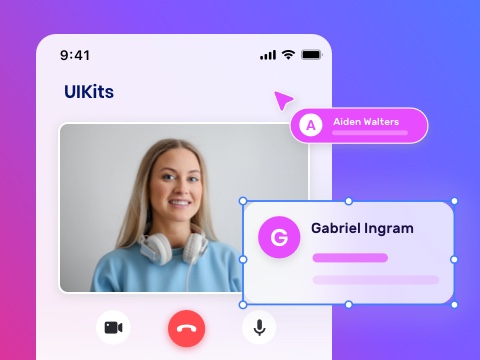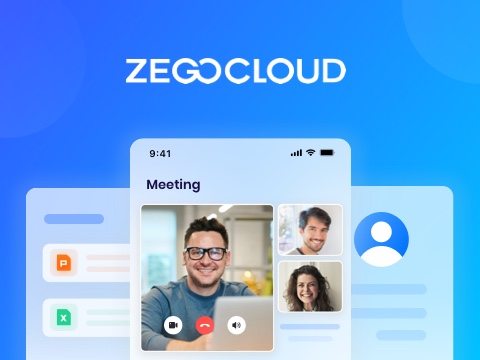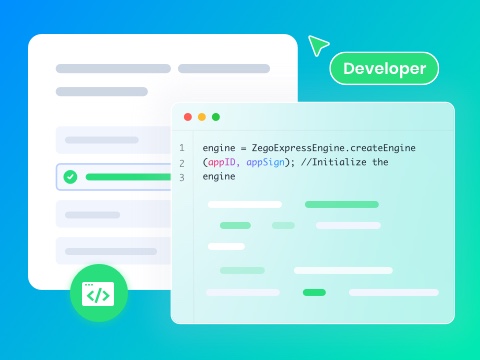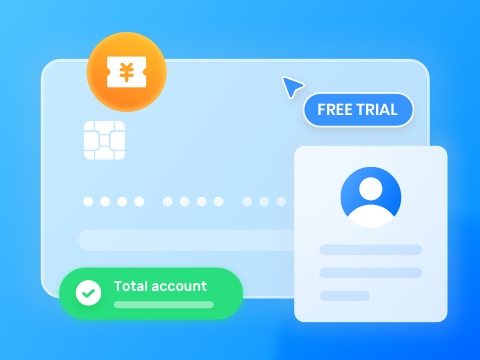Conversational AI is a technology that allows machines to understand, interpret, and respond to human prompts naturally. It’s not limited to that, as this AI is different from chatbots and features innovative models and algorithms. Therefore, if you want to know more about AI assistants in detail, this guide is here for you. For your clarity, we have mentioned its significant differences with generative AI, benefits, and use cases.
What is Conversational AI?
AI conversation bot is a system that uses innovative models like LLM and NLP to analyze human texts and offer tailored suggestions. Using these models, the AI interprets the text, accesses the knowledge base, and provides accurate and fast replies. Moreover, while doing so, they can determine the human tone and emotions while interacting, offering empathic responses.
Additionally, this type of AI differs from chatbots and generative AI since it’s more flexible and accurate. Unlike chatbots, it doesn’t rely on scripted responses and offers up-to-date data by learning from previous communication. Regarding usage, conversational AI is mainly designed for organizations that seek to improve customer satisfaction by providing instant solutions.
Key Elements of Conversational AI
Conversations with artificial intelligence seem simple, but little do you know that bundles of tech stacks are behind them. When it comes to conversational virtual assistants, they feature various components that make them ideal for human-like interaction. Hence, if you want to know about those features, here we have mentioned 5 of them.
- Natural Language Processing: First, conversational AI features NLP to easily analyze and interpret the intended text behind conversion. Through this, they can learn about the human feelings behind words to offer responses without affecting their feelings.
- Machine Learning: Using the machine learning model, this virtual assistant can acquire knowledge from past communications to improve over time. Hence, this facility of AI agents will ensure you provide relevant and updated information instead of scripted responses.
- Speech Recognition: Just like Siri and Alexa, the conversational AI can also recognize speech and turn it into text. Having this ease enables hands-free interaction, making it convenient and accessible for users.
- Dialog Management: Additionally, its dialogue management component manages the interaction flow to ensure coherence. Through this, AI can decide what and how to say next to make communication feel natural and context-relevant.
- Integration with Other Systems: They can also connect with other tools and platforms, like checking the weather and booking appointments. Thus, this integration aids organizations in automating the task since most AI agents can even predict dangers.
How Does Conversational AI Work?
When it comes to determining how a conversational AI chatbot works, it’s quite simple, though it features innovative models. Hence, this section covers detailed information regarding the functionality of conversational virtual assistants.
- Input Processing: Starting off, the AI receives the human prompt via text or call and analyzes it using NLP to understand the context.
- Intent Recognition: After that, the virtual assistant interprets the user’s intent message by examining the input in detail and using a knowledge base.
- Context Understanding: Hence, the AI agent then tracks the previous conversation to ensure it is relevant to past interactions.
- Response Generation: Now, based on prior communication, context, and analysis, it uses pre-programmed rules and ML models to generate responses.
- Output Delivery: Consequently, the conversational AI delivers the reply through text or voice calls to complete the conversion.
Conversational AI Examples and Use Cases
Whether it’s Southeast Asia conversational AI or any other type of AI agent, the AI market is loaded. Therefore, to add more information, we have mentioned various kinds of conversational AI along with their use cases.
- Virtual Assistants: Like Siri, Google Assistant, and Alexa, these virtual assistant helps humans in daily tasks like setting alarms and playing music. Besides, they can control smart devices and understand and process voice commands using the NLP model.
- Customer Support Chatbots: Many marketing websites and business owners use these to answer customers’ questions and troubleshoot issues. Through these, they can manage the orders, reply to consumers’ queries, etc, to reduce human effort.
- Healthcare Assistants: You can also use conversational AI in numerous healthcare applications to recommend medicines and answer health-related issues. Besides, users can book appointments, remind patients or doctors, and offer a basic medicine model. Additionally, if you are an introvert, you can use AI for therapy since it features NLP to interpret human emotions.
- E-commerce Bots: To make shopping seamless, the e-commerce platform uses AI to recommend products based on their interest. Moreover, users can ask questions about the items to learn about their usage and benefits. Having this, these platforms can simultaneously boost their business growth and improve customer satisfaction.
- Banking and Finance Chatbots: Other than that, AI agents are used in banking applications to help customers check balances, transfer funds, and apply for loans. Since no one loves to call the helpline, this facility assists users in resolving basic issues to reduce human dependency.
- Language Learning Assistants: Conversational AI tools are great for language learners, offering real-time feedback, grammar correction, and AI Spanish conversation practice to improve fluency.
Types of Conversational AI
There are several types of conversational AI, each designed to handle different levels of interaction. These include:
1. Rule-Based Chatbots
Rule-based chatbots follow predefined scripts or “if-then” rules. They can only respond to specific commands and keywords, making them limited in their ability to handle varied conversations.
2. AI-Powered Chatbots
AI-powered chatbots use natural language processing (NLP) and machine learning to understand context and provide more flexible responses. They can adapt to new information, improving over time with more interactions.
3. Virtual Assistants
Virtual assistants like Siri, Alexa, or Google Assistant offer more advanced conversational capabilities. They not only answer queries but also perform tasks, such as setting reminders or controlling smart home devices, using voice recognition and deep learning.
4. Self-Learning Conversational Agents
These are highly advanced AI systems that learn autonomously from interactions, adapting their responses over time. They use deep learning to continuously improve their conversational abilities, making them more sophisticated and dynamic in customer service or other applications.
5. Multimodal Conversational AI
This type of AI can interact across various input channels, such as voice, text, and even images. It’s capable of understanding and processing information from multiple sources, offering a more holistic and versatile conversational experience.
How to Create Conversational AI
Creating a conversational AI involves several key steps, including defining the purpose, selecting the right tools, and integrating advanced features for a seamless user experience. Here’s how you can build a conversational AI, with ZEGOCLOUD conversational AI playing a key role in enhancing real-time communication features.
1. Define the Purpose and Use Case
Before diving into the technical aspects, it’s crucial to define the use case of your conversational AI. Is it a customer support bot? A virtual assistant for personal tasks? Or perhaps an AI-driven tool for education or entertainment? Understanding the purpose will help you tailor the conversational flow and required features.
2. Choose the Right Natural Language Processing (NLP) Tools
NLP is at the heart of any conversational AI. You’ll need NLP models to process and understand the user’s input. Popular choices include frameworks like Google Dialogflow, IBM Watson, and Microsoft Azure Cognitive Services. These tools help your AI understand and respond in a human-like manner.
3. Incorporate Machine Learning for Continuous Improvement
Machine learning allows the AI to improve its responses over time by learning from interactions. Integrating a machine learning algorithm can help your AI understand more complex conversations, handle a wider variety of queries, and offer personalized experiences based on user data.
4. Integrate Real-Time Communication Features with ZEGOCLOUD
To create a truly engaging conversational AI, especially for customer service, education, or virtual events, incorporating real-time communication features is essential. This is where ZEGOCLOUD comes into play. ZEGOCLOUD provides APIs and SDKs that can easily integrate real-time voice, video, and chat functionality into your AI solution.
For example, if you’re building a customer service chatbot, ZEGOCLOUD’s real-time voice and video APIs can enhance the user experience by allowing customers to transition from text chat to live voice or video communication with a human agent seamlessly. This makes interactions more personal and effective.
5. Testing and Fine-Tuning
Once you’ve integrated all components, it’s time to test your conversational AI. Evaluate how well it understands different inputs, its response accuracy, and the overall user experience. You’ll likely need to refine and adjust both the NLP models and the AI’s ability to handle real-time interactions to ensure smooth communication.
6. Deploy and Monitor
After testing, deploy your AI system on the desired platform, whether it’s a website, mobile app, or social media channel. Ongoing monitoring is necessary to ensure optimal performance, track user satisfaction, and make adjustments based on feedback. ZEGOCLOUD’s scalable infrastructure ensures that your conversational AI can handle varying traffic loads, maintaining high performance even as your user base grows.
Benefits of Conversational AI
Many users wonder about the significance of conversational artificial intelligence since they only assume it’s limited to offering suggestions. Hence, in this section, we have highlighted 5 main benefits of virtual assistance.
- Improved Customer Support: Conversational AI reduces the response time by offering 24/7 customer support to ensure they get immediate assistance.
- Personalized Experience: It can also tailor the interactions according to the user’s preferences to provide tailored recommendations while guaranteeing accuracy.
- Cost Efficiency: As the AI can automate tasks, it reduces human dependency and cuts staffing costs to handle repetitive jobs seamlessly.
- Increased Productivity: Moreover, it can allow you to boost productivity and workflow by aiding in data entry or scheduling.
- Scalability: Unlike basic applications, conversational AI can easily handle multiple interactions at once without affecting the response quality.
Challenges of Conversational AI Technologies
During the conversation with AI, know that there are numerous challenges users can encounter. This section covers 5 of them so that you can opt for reputable AI agents that surpass these limitations.
- Training Data Bias: AI models are trained on extensive datasets, and if the data is biased, the AI will reflect that in its responses. Thus, this will lead to misunderstanding, affecting users’ interest in conversational AI.
- Security and Privacy Risks: Many users use AI for personal purposes, too, allowing them to handle sensitive data. So, because of this, data breaches and misuse concerns can arise if not properly managed.
- Integration with Existing Systems: Integrating AI with existing software and databases is challenging, mainly for beginner developers. Therefore, ensuring compatibility and smooth data exchange requires additional planning and technicalities.
- Dependency on Large Datasets: When creating an AI agent, you need to add a massive number of databases to ensure it offers updated information. Hence, it usually takes time to gather, filter, and maintain the datasets, making it costly.
- Speech Recognition and Accuracy: Though it has innovative speech recognition technology, background noise can affect the interaction. Due to this, AI fails to interpret the input correctly, leading to errors in responses that can be frustrating.
Conversational AI vs Generative AI
You might be wondering whether conversational AI is just like Generative AI or not. Well, not every AI that can really have a conversation facility is generative; some generate responses based on input, while others on predefined rules. Therefore, in this section, we have made a detailed table to differentiate between virtual assistants for better understanding.
| Feature | Conversational AI | Generative AI |
|---|---|---|
| Definition | Conversational AI refers to systems designed to understand and respond to human input, which facilitates natural conversations, typically in text or voice. | Generative AI involves algorithms that can create new content, such as text, images, music, or even video, based on patterns learned from existing data. |
| Primary Purpose | To engage in two-way communication with users, solving queries, providing support, and enabling tasks such as scheduling. | Its aim is to generate new, original content based on learned patterns from large datasets. |
| Technology Used | Natural Language Processing (NLP), Machine Learning (ML), and often Reinforcement Learning (RL) to improve user interaction. | Deep Learning, especially Generative Adversarial Networks (GANs), Transformer models like GPT, and Variational Auto encoders (VAEs). |
| Main Focus | Facilitating human-like conversations and providing interactive, real-time responses. | Generation of new data, such as text, images, or even music, by imitating existing data. |
| User Interaction | Primarily focused on receiving and responding to user input to assist with tasks, solve problems, or provide information. | Generally focused on producing creative or novel content with minimal user input beyond prompts or settings. |
| Adaptability | Can adapt to different conversation contexts and user preferences over time. | Adapts by generating content based on the learned patterns but doesn’t directly engage in conversational exchanges. |
| Use Cases | Customer support, personal assistants, FAQ bots, e-commerce assistants, healthcare chatbots, and interactive games. | Content creation (writing, image generation), enhancing creativity, providing new insights, generating simulations, game development, and data augmentation. |
| Output Type | Text or voice-based responses tailored to user requests. | Original content such as articles, images, videos, and audio. |
| User Experience | User-centered, aiming to solve specific problems or facilitate tasks via conversations. | Focused on content creation, offering users novel, customized outputs based on input parameters. |
Elevate Your App Experience with ZEGOCLOUD’s Conversational AI Technology
When making AI conversation applications, if you want to offer a lag-free communication facility, ZEGOCLOUD is the best solution. With over 500 nodes in 212 countries, this platform provides a conversational AI solution to ensure smooth user interaction. Moreover, integrating this SDK will let users select ASR vendors for better speech recognition and improved performance.
Regarding interpreting language, users can take advantage of LLM, which supports OpenAl or Mininax in offering advanced language processing ability in AI agents. Furthermore, this API provides an agent template library to create multiple conversational AI assistants. After generating them, you can add them to various group chats to seek mutual recommendations.
The foremost feature of this SDK is that it can alter the tone and emotions per the user’s voice or text message to show empathy. While using its AI agent in applications, you can offer text-to-image creation features besides chatting. For that, there is a text-to-image generation model, letting consumers extract images via text or voice call commands.
What is The Future Of Conversational AI?
The future of conversational artificial intelligence is reassuring as it helps users automate tasks and reduce human effort. According to a rough estimate, in 2023, the AI industry was valued at $13.2 billion by playing a significant role in business transformation. However, by 2030, these numbers will increase to $49.9 billion, with a growth rate of 24.9% in various sectors, mainly health and finance.
Additionally, due to its vast reach and its potential impact on customer interaction, over 2.7 billion users now prefer their usage. Around 64% of consumers use messaging over voice channels to enhance customer service interaction. Furthermore, according to research, conversational AI can significantly reduce customer service costs by up to 30% while improving response times and overall customer satisfaction.
Conclusion
In a nutshell, conversational AI is a cutting-edge technology that interrupts the input and offers instant replies to the users. Featuring NLP, they understand human emotions and learn from the previous interaction for the updated interaction. Hence, if you want to know more about this virtual assistance, review the essential details given in this article.
However, if you want to integrate AI into your application for user ease, we suggest trying ZEGOCLOUD. This platform offers you an innovative AI agent API through which you can access features like image generation and voice cloning. To ensure accuracy in response, its ASR vendors’ features can aid you in improving AI speech recognition systems.
Read more:
FAQ
Q1: What is an example of conversational AI?
An example of conversational AI is ChatGPT, which can engage in detailed conversations with users. Other examples include virtual assistants like Siri, Google Assistant, and Alexa, which understand voice commands and interact with users to complete tasks.
Q2: What is the best conversational AI?
The best conversational AI depends on your needs. ChatGPT is widely recognized for its ability to generate human-like text responses. For voice assistants, Google Assistant and Siri are top choices for their seamless integration with devices. For business solutions, platforms like Dialogflow and IBM Watson are highly rated.
Q3: What is the difference between a chatbot and conversational AI?
A chatbot is typically a rule-based program designed to respond to specific questions or tasks, often following pre-written scripts. In contrast, conversational AI is more advanced and uses machine learning and NLP to engage in more dynamic, intelligent, and context-aware conversations. Conversational AI can learn from interactions and adapt, while chatbots generally provide fixed responses.
Q4: Is ChatGPT a Conversational AI?
Yes, ChatGPT is a type of conversational AI. It uses natural language processing (NLP) to understand and respond to user inputs in a human-like manner. This makes it capable of engaging in real-time conversations and assisting with tasks like answering questions, providing information, and even holding casual chats.
Let’s Build APP Together
Start building with real-time video, voice & chat SDK for apps today!










